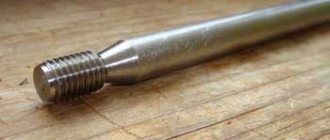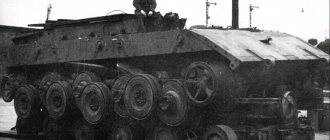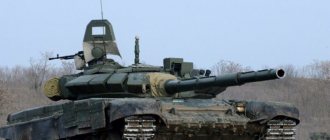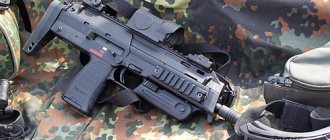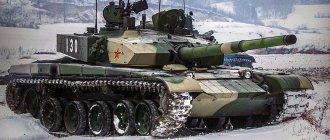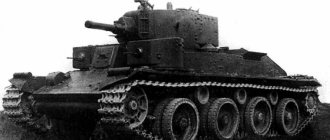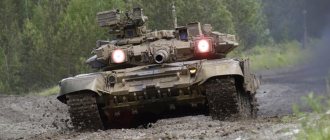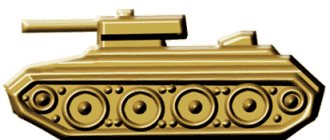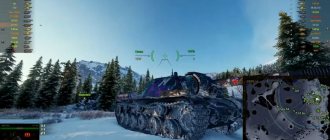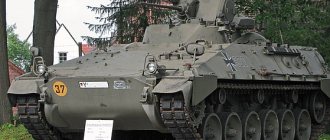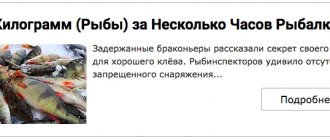The T-54 medium tank (“Object 137”) was designed in Department-520 Design Bureau of Plant No. 183 (Nizhny Tagil) under the leadership of A.A. Morozov in October 1944. The first prototype of the tank, designated T-54 (first sample), was manufactured by January 30, 1945. The tank was put into service on June 12, 1950. During serial production in 1947-1959 by plants No. 183 (1947-1958). No. 75 (1948-1959). No. 174 (1947-19557) 16,402 T-54 tanks of all modifications were produced in the USSR. During the licensed production of the T-54A in 1956-1963, 3,000 tanks were produced in Poland, and 2,500 tanks in Czechoslovakia in 1958-1964. During the mass production of the T-54A tank, organized with the help of Soviet specialists. designated Toure 59. About 6,000 vehicles were manufactured in China between 1957 and 1987. The total production of T-54 tanks of all modifications in the period 1947-1987 amounted to 27,902 vehicles.
Description of the design of the T-54 tank, model 1951
The T-54 tank has a classic general layout with a control compartment located in the bow of the hull, in the middle part of the hull and in a turret mounted on top. - fighting compartment, in the rear part of the hull - engine and transmission compartment. The tank's crew consists of four people, located: the tank commander - in the turret to the left of the gun breech; the driver - in the bow of the hull on the left side; the gunner - in the turret to the left of the gun; the loader - in the turret to the right of the gun.
The tank hull is a rigid box welded from armor plates. It consists of the bow, sides, stern, bottom, roof and partitions. The bow of the hull consists of upper and lower inclined armor plates, 100 mm thick. The sides of the hull are vertical armor plates, 80 mm thick. welded to the upper inclined plate of the bow, turret plate, bottom and stern plates. The rear part of the hull consists of three inclined armor plates. Final drive housings are welded to the armor plates and sides. The bottom of the hull has a trough-shaped cross section and consists of three armor plates welded together. The hull roof consists of a turret plate, a removable roof over the engine, a hinged roof over the radiator, adjustable output shutters and hinged covers over the fan.
The tank's turret is a shaped steel casting. In its front part there is an embrasure for installing a cannon. To the right of the embrasure in the turret there is an oval slot cut out for a coaxial machine gun, and to the left there is a slot for a sight. Along the perimeter of these slots, shells are welded to the tower for attaching protective covers. Two hooks are welded in the front and rear of the tower for gripping the tower with cables. installation and dismantling. At the top of the tower body there is a welded roof, consisting of two halves welded together. In the right half of the roof there are three round cutouts, into one of which the fan housing is welded, in the other the loader’s hatch with a turret mount is mounted, in the third there is a loader observation device. There are also three cutouts in the left half of the roof in which the commander's cupola, the TPN-1 sight and the antenna input of the radio station are mounted. A bracket for mounting an anti-aircraft machine gun is welded to the rear of the turret. At the rear of the loader's hatch there is a stopper for mounting the anti-aircraft machine gun in a combat mode. A recess is made in the lower part of the tower, to which the bottom sheet is welded. The bottom sheet has holes for fastening the upper strap of the tower. The turret is installed on a ball bearing in the annular recess of the turret hull plate.
The main armament of the tank consists of one 100-mm D-10T cannon, two 7.62-mm SGMT machine guns, one coaxial with a cannon and the second a course gun, located in the tank hull to the right of the driver, and one 12.7-mm anti-aircraft gun DShKM machine gun mounted on an anti-aircraft turret mounted on a rotating chase of the loader hatch. The ammunition load of the T-54 tank consists of 34 rounds for the cannon, 200 rounds for the DShKM machine gun, 3,500 rifle rounds for the SGMT machine guns. For aiming when firing from a cannon and coaxial machine gun, a telescopic articulated sight TSh2-22 is used. For aiming when firing at air and ground targets from the DShKM machine gun, the K10-T collimator sight is used.
The power plant of the tank uses a four-stroke, high-speed V-shaped liquid-cooled tank diesel engine B-54 with a power of 520 hp. The tank's power transmission is mechanical, with stepwise changes in gear ratios, and is located in the rear of the tank hull. It consists of: a guitar, a main clutch, a gearbox, two planetary rotation mechanisms, two final drives and a cooling system fan drive.
The chassis of the tank consists, for one side, of one front-mounted dual-slope guide wheel with a steel rim, five dual-slope, equipped with rubber tires, road wheels with torsion bar suspension and lever hydraulic shock absorbers on the first and last suspension units, one rear lantern drive wheel arrangement with replaceable gear rims, fine-linked metal caterpillar, consisting of 90 tracks 580 mm wide, with an open metal hinge.
The tank is equipped with external and internal communications. To ensure external communications, a tank shortwave radio station R-113 is installed in it. and for internal communications - a tank intercom R-120.
To extinguish fires inside the tank, a semi-automatic fire extinguishing system with push-button control is used. It provides extinguishing of three separate fires or two fires that occurred simultaneously in different departments, and another fire in one of the departments. Two large BDSh-5 smoke bombs are installed on the rear plate of the tank hull on the right and left.
To overcome water obstacles along the bottom, the tank is equipped with removable equipment for underwater driving.
Maintenance
Currently, you can find almost any spare parts for the T-54; in addition, spare parts from some Belarusian tractors that are similar in weight and chassis design are also suitable for the tractor.
The maintenance period for the T-54 is the same as for any tracked tractor: it is necessary to prepare the tractor for work in the spring-summer and winter-autumn seasons, replacing fuel and oil, checking the functionality of the main mechanisms and moving parts of the tractor structure. Diesel fuel for filling must settle for 48 hours.
Main modifications of the T-54 tank
T-54 mod. 1945 - experimental tank, designed in Department-520 Design Bureau of Plant No. 183 (Nizhny Tagil) under the leadership of A.A. Morozov based on the design of the T-44V medium tank in the fall of 1944. By January 30, 1945, the first prototype of the tank was produced at plant No. 183, which was sent to the factory run. After completion of the factory run and final assembly, this vehicle was sent to Moscow to be shown to the command of the BT and MB spacecraft and members of the government. By the end of July, the plant produced a second prototype of the tank, which differed from the previous vehicle by installing a five-speed gearbox with synchronizers and planetary turning mechanisms. On July 28, this sample was sent without installing a gun for sea trials, which continued until November 4, 1945.
Tank T-54 mod. 1945 had a classic general layout, with the control compartment located in the bow of the hull, the fighting compartment in the middle part of the hull, with a turret mounted on top, and the engine-transmission compartment in the rear of the hull. The crew of the tank consisted of four people, located: the tank commander - in the turret to the left of the breech of the gun; driver - in the bow of the hull on the left side; gunner - in the turret to the left of the gun; the loader is in the turret to the right of the gun.
The armor protection of the tank is differentiated against projectiles. The hull design was similar to that of the T-44 tank. A trough-shaped bottom was used.
The rotating cast turret with a clear support diameter of 1800 mm, made like the turret of the T-44 tank, was made of 66 AMC armor with medium-hardness hardening. The welded roof of the turret was made of two rolled armor plates 30 mm thick, welded together.
The main armament of the tank consisted of a 100-mm experimental tank gun D-10T-K designed by the NKV plant No. 99 and two 7.62-mm GVT machine guns with belt feed, one of which was coaxial with the gun, the second was a course gun, installed in the control compartment to the right of driver mechanic. When firing from a cannon and a coaxial machine gun, a telescopic articulated sight TSh-19 was used
The power plant of the tank used a V-shaped twelve-cylinder four-stroke diesel engine V-2-44 with a power of 520 hp. The transmission included: an input gearbox (guitar), a multi-disc main dry friction clutch; three-way five-speed gearbox, two multi-disc onboard dry friction clutches; two band brakes (with cast iron linings) and two single-row final drives.
Read: Tracked landing craft LVT-4
The tank's suspension consisted of ten balancers, ten torsion shafts with a twist angle of 44°, ten brackets, ten balancer supports, and ten stops. The balancers of the road wheels, unlike the stamped balancers of the T-44 tank, were made cast, integral with the axes of the balancers. The caterpillar propulsion unit with aft drive wheels consisted of two large-link (track pitch 172 mm) ridge-geared tracks, two drive wheels, ten cast twin road wheels with external shock absorption (diameter 830 mm) and two cast twin guide wheels (diameter 500 mm) with track tensioning mechanisms.
T-54 mod. 1946 (“Object 137”) - an experimental tank designed in Department-520 Design Bureau of Plant No. 183 (Nizhny Tagil) under the leadership of A.A. Morozov based on the design of the T-54 tank of the 1945 model in the spring of 1946. In July 1946, two experimental T-54 tanks were produced (the third prototype). In the period from June 20 to August 10, 1946, prototypes of the T-54 tank were subjected to 1000-km interdepartmental tests on the route of plant No. 183. At the end of September 1946, the 100-mm D-10T gun designed by F.F. was chosen for the final armament of the tank. Petrova.
From the T-54 tank mod. In 1945, the new vehicles were distinguished mainly by a modified turret design, the installation of forward machine guns, the introduction of an anti-aircraft machine gun mounted on a turret mounted in a glass welded to the turret roof between the hatches of the tank commander and loader, and the lantern engagement of the drive wheels with the tracks. These tanks differed from each other only in the installation of the main armament: in the first sample of the T-54 tank, a 100-mm LB-1 tank gun was installed, and in the second, a D-10T. A 7.62-mm SG-43 machine gun was paired with the cannon. The other two SG-43 machine guns were course-mounted and were installed in armored boxes on the left and right fenders. Inside the box, each machine gun contained two special boxes with belts of 250 rounds of ammunition. The driver-mechanic fired from the machine guns. The machine guns were aimed at the target by the driver by turning the tank.
T-54 mod. 1947 - serial medium tank, designed in Department-520 Design Bureau of Plant No. 183 (Nizhny Tagil) under the leadership of A.A. Morozov based on the design of the T-54 tank (head model) in January - April 1947. During serial production by plants No. 183 (Nizhny Tagil, 1947-1949), No. 75 (Kharkov, 1948-1949), No. 174 (Omsk, 1948-1949) from July 1947 until January 1949, 617 T-54 mod. battle tanks were produced. 1947 (production was stopped due to a large number of complaints from the troops). During the first half of 1949, factories produced an additional 96 training tanks of this modification.
The total weight of the tank was increased to 36 tons by redesigning the design of its main mechanisms. The track roller disks were strengthened by increasing the number of ribs from 10 to 12, while simultaneously thickening them and replacing the material, and revised the design of the synchronizers for the second and third gears of the gearbox, and improved visibility from the commander’s and driver’s seats.
The tank's armament included a 100-mm rifled D-10T cannon with a wedge horizontal semi-automatic bolt, a coaxial 7.62-mm SG-43 machine gun, two SG-43 machine guns placed in armored boxes on the fenders, and 12.7- mm anti-aircraft machine gun DShK mod. 1938/46. Compared to the previous model of the T-54 tank produced in 1946, the design of the front-mount machine guns underwent some changes: the boxes for their installation had incomplete armor and were made removable instead of those previously welded to the side plates.
The suspension system used an individual torsion bar. The balancers of each side, with the exception of the fifth balancer, were installed along the direction of the tank, and the fifth balancer was installed against the direction. The caterpillar propulsion unit consisted of two fine-linked lantern tracks with drive wheels, two cast drive wheels with removable toothed rims, two cast guide wheels with two-worm track tensioning mechanisms, and ten road wheels with massive rubber tires. The left side track rollers were shifted back by 105 mm relative to the starboard rollers. To improve the tank's maneuverability when driving on soils with low load-bearing capacity, spurs could be installed on the ridgeless tracks of the caterpillar, for which purpose a hole was drilled in the middle of these tracks for a mounting bolt.
The design of the T-54 tank produced in 1948 repeated the design of the lead vehicles produced in 1947, with the exception of measures taken that increased the operational reliability of the vehicle. In addition, instead of the TSh-19 sight, the TSh-20 sight was installed in the tank turret, and hydraulic shock absorbers on the outer suspension units were installed in the chassis.
T-54 mod. 1949 - serial medium tank, designed in Department-520 Design Bureau of Plant No. 183 (Nizhny Tagil) under the leadership of A.A. Morozov based on the design of the T-54 tank mod. 1947 to 1948. The first tank with a new hull and turret went on a test run on August 29, 1949. During serial production, factories No. 183 (Nizhny Tagil), No. 75 (Kharkov), No. 174 (Omsk) from the end of 1949 to November 1951 produced 2,223 T-54 tanks. 1949 The T-54 tank was adopted by the Soviet Army by order of the USSR Minister of War in 1950.
Tank T-54 mod. 1949 was a modernized version of the T-54 mod. 1947, during which the first stage of modernization was carried out. In connection with the installation of a new turret to ensure maximum forward declination angles of the gun, without impinging on the driver's hatch, the axis of its trunnions was shifted back by 60 mm to the axis of the turret support and lowered down by 25 mm, with a corresponding lowering of the roof and the overall height of the turret. Instead of two forward-facing machine guns, which were previously located on the fenders, one forward-facing 7.62-mm SG-43 machine gun was installed in the control compartment to the right of the driver. An improved design of the DShK anti-aircraft machine gun turret was installed on the rotating chase of the loader's hatch base.
The maximum thickness of the upper frontal armor plate of the hull was reduced from 120 to 100 mm while maintaining the angles of inclination from the vertical. The reverse gate (“zaman”) of the turret, without forming a niche, was significantly reduced in height and retained only to ensure the opening of the driver’s hatch cover. Instead of the existing round shape of the driver's hatch, a shape with a cut segment was used. In the air cleaning system, instead of two Multicyclone type air cleaners, a new three-stage air cleaner with automatic cleaning of dust collectors was installed. A nozzle heater with a smoke-tube boiler designed by V.M. was installed on the tank. Golosova. The configuration and number of external fuel tanks, as well as the shape of the upper fuel tank in the MTO, were changed. The width of the guide wheel discs was increased from 230 to 370 mm. Instead of cast balancers of the middle and rear suspension units, stamped balancers were introduced and the design of the balancer buffer device was changed. As a means of communication on the tank, a short-wave transceiver, simplex, telephone and telegraph radio station 10PT was used with a new installation kit, which made it possible to completely eliminate interference during radio reception.
T-54 mod. 1951 (“Object 137”) - a serial medium tank, designed in Department-520 Design Bureau of Plant No. 183 (Nizhny Tagil) under the leadership of A.A. Morozov based on the design of the T-54 tank mod. 1949 with the installation of a new tower in 1950. A prototype of the tank, manufactured at the beginning of 1951, successfully passed field tests from February 27 to March 7. During serial production at factories No. 183 (Nizhny Tagil), No. 75 (Kharkov), No. 174 (Omsk) from November 1951 to May 1955, 7009 T-54 tanks were manufactured. 1951 In 1952, in connection with the introduction of a unified indexation of manufactured products by the Ministry of Transport Engineering, the T-54 tank was given the name “Object 137”.
The main differences from the T-54 mod. 1949:
— a cast spherical turret with a welded roof was installed, with a frontal armor thickness of 200 mm; - instead of the TSh-20 sight, a telescopic gunner's sight TSh2-22 was installed with a variable 3.5- and 7-fold increase in the field of view; — for the driver, the TVN-1 infrared night vision device was introduced, adopted for service in 1951; — instead of SG-43 machine guns, SGMT was installed; — in 1952, a stowage locking rod for the gun was introduced, the design of the output shutter drive was changed, special seals were installed on the turret support, a non-removable cover on the gun mantlet, removable covers on the holes for the sight and coaxial machine gun, as well as on the fan cowl . In connection with the installation of the OPVT, a special flange of the engine exhaust pipe was welded for mounting the valve device; - since 1953, the UBR-412D round with an armor-piercing tracer projectile of improved armor penetration BR-412D (with armor-piercing and ballistic tips) and an MD-8 or DBR-2 fuse was introduced into the ammunition load; — from November 1953, a fire-tube ring heater boiler began to be installed on the tank; - since 1954, the tank was equipped with a height-adjustable loader's seat and a footrest for the gunner, and on the commander's hatch cover - two prismatic observation devices instead of three. To improve cooling of the engine and transmission units, instead of a 24-blade fan, an 18-blade (duralumin) fan of increased performance was introduced. A rear light was introduced into the electrical equipment system, which was installed at the rear of the turret, and on vehicles of later production, on the upper frontal plate of the hull - a headlight with a blackout attachment and a headlight with an IR filter for the driver's night vision device. A main clutch with 17 friction discs instead of 15 has been introduced, as well as a turret pin stopper; — since June 1955, a two-stage air cleaner VTI-4 with automatic dust removal was installed on vehicles.
Read: Wedges L3 (CV3) – “Carro Veloce”
T-54A (“Object 137G”) is a serial medium tank, designed in Department-520 Design Bureau of Plant No. 183 (Nizhny Tagil) under the leadership of A.V. Kolesnikorva, later L.N. Kartsev, in 1952. In May 1952, three prototypes of the tank were produced, which successfully passed acceptance tests on August 26-30. Based on the results of military tests conducted in 1954-1955, on March 22, 1955, the T-54A tank (“Object 137G”) was adopted by the Soviet Army. During serial production in 1955-1957 by plants No. 183 (Nizhny Tagil, April 1, 1955 to June 1955), No. 75 (Kharkov, June 1, 1955 to April 1955), No. 174 (Omsk, June 1, 1955 to the fourth quarter of 1957) 4602 T-54A tanks were manufactured. Production of T-54A tanks under license has been organized in the Polish People's Republic since 1956, in the Czechoslovak Socialist Republic - since 1958. In 1956, the technical documentation for the T-54A tank was transferred to the People's Republic of China, where the Type 59 tank, which was a copy of the Soviet tank, had been produced at the tank plant in Baotou since 1957.
The T-54A tank differed from the T-54 mod. 1951:
— installation of a 100-mm D-10TG cannon with a tank weapon stabilizer in the vertical plane STP-1 “Horizon” and a gun ejector; — instead of the electric drive for turning the EPB-4 turret, the TAEN-3 “Air” drive was used; — to the right of the tank commander’s seat there is a cannon fence; — instead of the Multicyclone air purifier, VTI-4 was installed; — a spring drive of the generator was used; — a third external fuel tank was installed on the right fender with a capacity of 95 liters, all three tanks were connected by pipelines; — installed an oil injection pump MZN-2 instead of MZN-1; - in 1956, the DShK anti-aircraft machine gun was replaced by the modernized DShKM; — since October 1956, support rollers with a dynamic stroke increased to 142 mm and box-shaped disks began to be used in the chassis; - Since January 1957, the R-113 radio station and R-120 TPU began to be installed on the tank.
T-54B (“Object 137G2”) is a serial medium tank designed in Department-520 Design Bureau of Plant No. 183 (Nizhny Tagil) under the leadership of L.N. Kartsev, in 1955-1956. In the summer of 1954, Plant No. 183 assembled the first prototype of the tank with a mock-up of the Cyclone tank armament stabilizer in two planes. By the end of 1955, three experimental tanks with standard stabilizers were assembled and passed military testing at the beginning of 1956. The T-54B tank (“Object 137G2”) was accepted into service on September 11, 1956. During serial production in 1957-1958 by plants No. 183 (Nizhny Tagil, from September 1956 to June 1958), No. 75 (Kharkov, January 1, 1958 to March 1959), No. 174 (Omsk, III quarter of 1957) 1575 T-54B tanks were manufactured.
The T-54B tank differed from the T-54A medium tank:
— since April 1958, the tank was equipped with equipment for underwater driving OPVT-54; — the TVN-2 night vision device was introduced; — the driver had a GPK-48 gyro-compass installed; — a rotating floor was installed in the fighting compartment; - the tank commander began to install a TPKUB observation device (on some vehicles produced in 1957 - TPK-1). Since 1959, the TPKU-2B device was installed. In night conditions, a night observation device TKN-1, TKN-1S was installed in place of the TPKUB (TPKU-2B). — the main weapon was a 100-mm rifled gun D-10T2S with a two-plane stabilizer for tank weapons STP-2 “Cyclone”. For aiming when firing from a cannon and coaxial machine gun, the TSh2A-22 telescopic sight (TSH2B-22, TSh2B-22P) and the TPN-1 night electro-optical monocular periscope sight were used. — a shot with a BK5M cumulative projectile has been added to the cannon’s ammunition load.
T-54K (“Object 137K”) is a serial command tank, designed in Department-520 Design Bureau of Plant No. 183 (Nizhny Tagil) under the leadership of A.V. Kolesnikova, then L.N. Kartsev, in 1948-1953. The first sample of the Object 137K tank was manufactured in early September 1950, based on the design of the T-54 mod. 1949 In 1954, two prototypes of the tank were produced, which passed field tests. To produce the T-54K tank, plant No. 174 (Omsk) was identified, which produced 50 tanks in 1955. The T-54K tank was put into service in 1958.
The command tank was different from the linear T-54 mod. 1951 by installing an additional radio station RSB-3T with a gas-electric charging unit "Ural-180", changing the location of the emergency hatch in the bottom of the hull, reducing the tank's ammunition load to 13 rounds for the gun and 2,500 rounds for the SGMT machine guns and 200 rounds for the DShK machine gun.
T-54AK (“Object 137GK”) is a serial command tank, designed in Department-520 Design Bureau of Plant No. 183 (Nizhny Tagil) under the leadership of L.N. Kartsev based on the design of the T-54A tank in 1955. Two prototypes of the tank were manufactured in the first half of 1955. In December 1956, plant No. 183 (Nizhny Tagil) produced a series of 50 T-54AK tanks. The tank was put into service in 1958.
The command tank differed from the linear T-54A by installing an additional R-112 radio station with a Ural-180 gas-electric charging unit and a 10-meter semi-telescopic antenna, moving the emergency exit hatch to the right side of the bottom of the tank hull, reducing the tank’s ammunition load to 28 rounds for the gun and 3500 rounds of ammunition for SGMT machine guns and 200 rounds of ammunition for DShK machine gun.
T-54BK (“Object 137KTs”) is a serial command tank, designed in Department-520 Design Bureau of Plant No. 183 (Nizhny Tagil) under the leadership of L.N. Kartsev based on the design of the T-54B tank in 1957. Two prototypes of the tank were manufactured in the fall of 1957. In 1957-1958, plant No. 183 (Nizhny Tagil) produced 180 T-54KTs (Ts-Cyclone) tanks. The tank was put into service in 1958.
The command tank differed from the linear T-54B by installing an additional R-112 radio station with a Ural-180 gas-electric charging unit and a 10-meter semi-telescopic antenna, moving the emergency exit hatch to the right side of the bottom of the tank hull, reducing the tank’s ammunition load to 26 rounds for the gun and 3500 rounds of ammunition for SGMT machine guns and 200 rounds of ammunition for DShK machine gun.
“Object 141” is an experimental tank designed in Department-520 Design Bureau of Plant No. 183 (Nizhny Tagil) under the leadership of L.N. Kartsev based on the design of the T-54 tank mod. 1951 to 1953-1954. In May-September, installation was carried out in the T-54 mod. 1951 100 mm D-54 guns. Until 1959, the Object 141 tank was used to test the rifled 100-mm D-54 gun and the 115-mm smoothbore U-5B. From the serial tank T-54 mod. The 1951 Object 141 tank differed only in the installation of the main armament.
Read: Nikonov AN-94 “Abakan” assault rifle (USSR-Russia)
T-54M arr. 1954 - experimental tank, designed in Department-520 Design Bureau of Plant No. 183 (Nizhny Tagil) under the leadership of L.N. Kartsev based on the design of the T-54 tank mod. 1951 to 1954. A prototype of the tank was manufactured in November 1954. In 1955, the T-54M tank passed factory and field tests. The tank was not put into serial production or service. Most of the changes in the design of the tank were recommended to be introduced into mass production.
The T-54M tank differed from the serial T-54 mod. 1951:
— increase to 50 rounds of ammunition for the gun; — use of storage tanks; — installation of a new anti-aircraft turret with a 14.5 mm KPVT machine gun; — the PPO system uses two cylinders; — the driver was equipped with a TVN-1 night vision device; — a V-54-6 diesel engine with a power of 580 hp is installed; - up to 980 l. increased capacity of fuel tanks; — a new main clutch with 17 discs was used; — support rollers with stamped and cast disks were used.
“Object 139” is an experimental tank designed in Department-520 Design Bureau of Plant No. 183 (Nizhny Tagil) under the leadership of L.N. Kartsev based on the design of the T-54A tank in 1955-1956. By the end of February 1955, three experimental tanks had been produced. From March 1955 to April 1959, the tanks were tested to fine-tune the stabilizer of tank weapons and sights. The tank was not put into service or into mass production.
The “Object 139” tank differed from the T-54A tank by the installation of a 100-mm D-54TS cannon with a slotted muzzle brake, an ejector, a “Molniya” tank weapon stabilizer in two planes, and a T2S “Udar” periscope sight with stabilization of the head mirror in two planes.
T-54BM (“Object 137G2M”) is an experimental tank designed in Department-520 Design Bureau of Plant No. 183 (Nizhny Tagil) under the leadership of L.N. Kartsev based on the design of the T-54B tank in 1957. In September 1957, two prototypes of the tank were produced. During 1958, the tanks underwent testing, which ended in January 1959. Subsequently, the proven technical solutions were used in the design of the T-55 tank.
T-54M “Object 137M” is a serial medium tank, the production of which was carried out during the overhaul of T-54 tanks at tank repair plants of the USSR Ministry of Defense in 1977-1981. Technical documentation for the modernization of the machine was developed by the Uralvagonzavod Design Bureau.
The tank was accepted into service by order of the USSR Minister of Defense No. 045 dated March 18, 1977. In total, 1,562 T-54M tanks were produced at overhaul plants as a result of modernization measures.
The modernized T-54M tank (“Object 137M”) differed from the base vehicle in the use of units, systems and devices developed for the T-55 tank. The combat weight of the modernized vehicle increased to 36.5 tons.
In the MTO of the tank, a V-55V (or V-55) engine with a power of 580 hp was installed across the hull. The fuel system has undergone changes associated with the installation of internal fuel tank racks and a TDA system. The MOD engine stopping mechanism was installed in the NK-10 fuel pump control drive. In the engine lubrication system, an MC-1 centrifugal oil filter and an additional oil line were additionally introduced to lubricate the AK-150SV air compressor.
A nozzle heater of a similar design to the heater of the T-62 tank was mounted in the cooling and heating system. A device was installed in the shutter control drive that automatically closed them at the moment of a nuclear explosion and protected the MTO units from the effects of the shock wave.
An air system was introduced into the tank, which ensured starting the engine with compressed air, controlling the hydropneumatic drive of the main clutch, ejection cleaning the driver's inspection instruments from dirt and dust while driving and when parked, as well as cleaning the tank components from dust by blowing with compressed air at carrying out its maintenance.
The tank's transmission was equipped with a reinforced main clutch (with 19 friction discs instead of 17) with a hydropneumatic device in the control drive. Reinforced PMPs of a modified design have been introduced. Instead of single-stage final drives, combined final drives with cylindrical and planetary gears were used.
The tracked propulsion unit could use small-link tracks with both an open metal hinge (OMH) and a rubber-metal hinge (RMH).
T-54MK (“Object 137MK”) is a serial command tank, the production of which was carried out during the overhaul of T-54 tanks at tank repair plants of the USSR Ministry of Defense in 1977-1981. The tank entered service in 1977. A total of 62 T-54MK tanks were produced.
Unlike the linear tank T-54M, the T-54MK tank:
— equipped with an additional shortwave radio station R-130, navigation equipment TNA-2 and a charging unit; — the ammunition load for the gun was reduced to 37 rounds.
The T-54 flamethrower tank is an experimental flamethrower tank, designed at the design bureau of plant No. 112 (Gorky) on the basis of the T-54 mod. 1947 in 1947-1948. At the end of 1948, Plant No. 112 produced a prototype of the tank. At the beginning of 1949, the tank underwent tests, which it failed. Subsequently, work on creating a flamethrower tank based on the T-54 was transferred to plant No. 75 (Kharkov). The flamethrower tank differed from the serial T-54 tank by installing an ATO-43 flamethrower in the turret, instead of a coaxial machine gun, and reducing the ammunition load for the gun to 24 rounds, and for the SG-43 machine guns to 2,250 rounds.
TO-54 (“Object 481”) is a serial flamethrower tank designed at the design bureau of plant No. 75 (Kharkov) under the leadership of A.A. Morozov on the basis of the T-54 tank in 1950-1953. By May 1952, the first two prototypes of the tank, designated “Object 481,” were produced. The TO-54 tank was put into service on June 21, 1954. In total, during serial production at plant No. 75 (Kharkov) in 1955-1959, 110 flamethrower tanks were produced.
The TO-54 tank differed from the serial T-54 tank mod. 1951 with the installation in the turret, instead of the coaxial 7.62-mm SGMT machine gun, of an automatic powder tank flamethrower ATO-49 and additional placement of flamethrower equipment in the control and combat compartments. The tank's ammunition load was 19 rounds for the cannon, 1,500 rounds for the SGMT machine gun, 200 rounds for the DShKM anti-aircraft machine gun, and 20 gunpowder rounds for the flamethrower.
“Object 482” is an experimental flamethrower tank designed at the design bureau of the plant named after. Malyshev (until 1957 - plant No. 75) (Kharkov) under the leadership of A.A. Morozov on the basis of the T-54B tank in 1958. A prototype of the tank was manufactured in December 1958. From March 2 to July 15, 1959, the Object 482 tank underwent field tests. Later it was used to test flamethrower weapons for the TO-55 tank. The “Object 482” tank differed from the serial T-54B tank by installing an ATO-200 automatic tank flamethrower and placing flamethrower equipment. The anti-aircraft machine gun was not installed on the tank. The tank's ammunition load was 20 rounds for the cannon, 1,500 rounds for the SGMT machine gun, 12 gunpowder cartridges, 12 incendiary cartridges and a portable fire mixture for 12 rounds for the flamethrower.
“Object 483” is an experimental flamethrower tank designed at SKB-1 plant named after. Malyshev (Kharkov) under the leadership of A.A. Morozov on the basis of the T-54 tank in 1959. A prototype of the tank, manufactured in 1959-1960, underwent field testing in 1961. Due to design flaws and limited combat capabilities, work on the Object 483 tank was stopped. From the serial tank T-54 mod. The 1951 flamethrower tank was distinguished by the installation of a high-power tank powder flamethrower OM-250 in the turret embrasure instead of a cannon, excluding the loader from the crew. The capacity of the fire mixture tank allowed for 14 fire shots.
Story
Previously, T-26 tanks (OT-26, OT-130, OT-133) were used as flamethrower tanks, but their weak armor made them vulnerable on the battlefield.
Work on equipping the tank began in November 1941 at the Chelyabinsk Tractor Plant. Designers: A.K. Malinin, G.A. Manilov and S.V. Fedorenko. They decided to place the ATO-41 piston-type flamethrower in the KV-1 turret in place of the coaxial machine gun. But given the size of the flamethrower, it was impossible to install it while maintaining the standard 76.2 mm cannon. For this reason, they decided to replace the latter with a 45-mm gun of the 1932/38 model and disguise its thin barrel with a false casing imitating a 76.2 mm caliber barrel. The tank received the designation KV-8. Tests at the Kubinka test site took place on December 29, 1941. Produced until 1943.
KV-8 in computer and video games
- “Front Line: Battle for Kharkov” (“Achtung Panzer: Kharkov 1943”)
- “Behind Enemy Lines 2: Desert Fox” (Domestic modification “Panzer Mod”)
- In the game "Close Combat III: The Russian Front" (English) and its remake "Close Combat: Cross of Iron" (English)
- Company of Heroes 2 is a special unit, that is, it can only be summoned using the commander’s skill (for example, “Front Shock Tactics”)
- In the global GZM fashion for the “Blitzkrieg” strategy
- In the game "Red Battle" as a flamethrower tank
Combat use
Flamethrower tank battalions and regiments were used mainly when attacking fortified zones and populated areas to defeat enemy personnel and destroy their fire weapons in shelters and fortified structures, while they were attached to rifle units. IN AND. Chuikov gives an example of the actions of a flamethrower tank in the city during the defense of Stalingrad in the fall of 1942: “We pulled three damaged tanks from the battlefield: one flamethrower and two medium ones. They were repaired, and I decided to stun the enemy by launching three tanks and 50 riflemen into a counterattack on the morning of October 29th. The direction of the counterattack was the junction between the divisions of Smekhotvorov and Guryev along Samarkand Street, where the enemy came almost close to the Volga. The counterattack began early in the morning, before dawn. It was supported by artillery from the left bank and the Katyusha regiment of Colonel Erokhin. It was not possible to capture a large space, but the results were impressive: a flamethrower tank burned three enemy tanks, two medium tanks suppressed the enemy in two trenches, where our riflemen immediately entrenched themselves.”
During the counteroffensive near Stalingrad at the end of 1942, the 235th separate flamethrower-tank brigade and the 512th separate flamethrower-tank battalion distinguished themselves. The 235th Flamethrower Tank Brigade, formed in the summer of 1942 in Lyublino near Moscow, was sent to the Stalingrad Front in September 1942, where its battalions took part in battles on the territory, in battles to destroy Paulus’s 6th Army. On December 12, 1942, the command of the Stalingrad Front sent the 235th Flamethrower Tank Brigade and the 87th Rifle Division to help the 51st Army near Kotelnikovo to repel the advance of the Manstein and Goth groups. During the Kotelnikovsky operation on December 14, 1942, in the Verkhne-Kumsky area, the 235th flamethrower-tank brigade, together with the 234th tank regiment, destroyed about 50 enemy tanks, 30 guns, other equipment, and more than 500 enemy soldiers and officers. She then took part in the completion of the Stalingrad operation. For the courage and bravery shown by the personnel, the brigade was renamed the 31st Guards Separate Flamethrower Tank Brigade. After being reorganized near Moscow and receiving new equipment, it participated in the liberation of the cities of Izyum and Barvenkoeo (the 31st Guards Separate Flamethrower Tank Brigade and the 517th Separate Flamethrower Tank Battalion then received the honorary names “Barvenkovskie”). Pavlograd, Dneprodzerzhinsk, Zaporozhye.
In 1943, in the battles near Taganrog and Mariupol, the 516th separate flamethrower-tank battalion performed well, and in the battles for Yevpatoria in April 1944, the 512th separate flamethrower-tank battalion (among other units received the name “Evpatoria”). And after the liberation of Novgorod in January 1944, the 500th, 501st, 502nd and 503rd separate flamethrower-tank battalions received the honorary name “Novgorod”.
To reduce losses among crews of flamethrower tanks, special fire-resistant suits were developed.[4]

